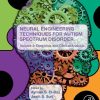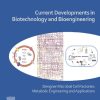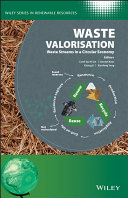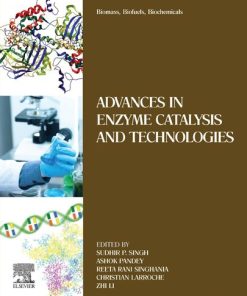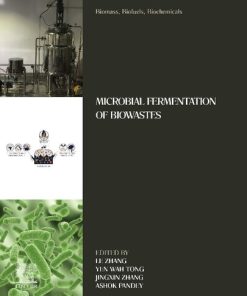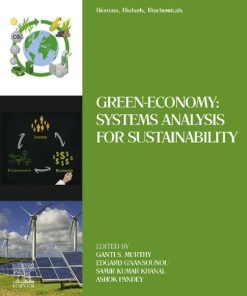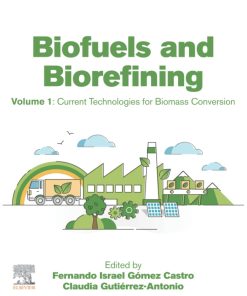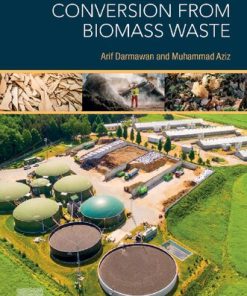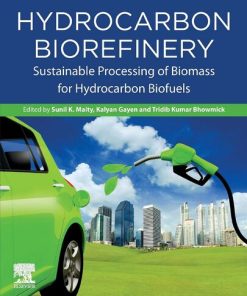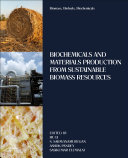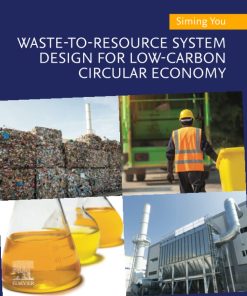(EBook PDF) Biomass Biofuels Biochemicals Circular Bioeconomy Technologies for Waste Remediation 1st edition by Sunita Varjani 032398472X 9780323984720 full chapters
$50.00 Original price was: $50.00.$25.00Current price is: $25.00.
Biomass, Biofuels, Biochemicals: Circular Bioeconomy: Technologies for Waste Remediation 1st edition by Sunita Varjani – Ebook PDF Instant Download/DeliveryISBN: 032398472X, 9780323984720
Full download Biomass, Biofuels, Biochemicals: Circular Bioeconomy: Technologies for Waste Remediation 1st edition after payment
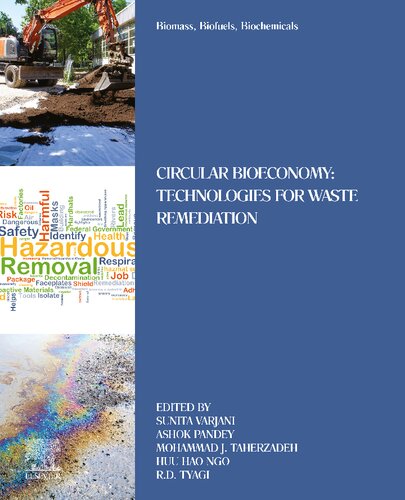
Product details:
ISBN-10 : 032398472X
ISBN-13 : 9780323984720
Author : Sunita Varjani
Circular Bioeconomy: Technologies for Waste Remediation covers information about the strategies and approaches facilitating the integration of technologies for wastewater and solid waste remediation. The book highlights the models developed to valorize wastes to produce biobased products. Various chapters presented in the book put a focus on sustainability approaches as a central theme in order to facilitate industries and policymakers to adopt circular economy goals. Since the principal idea of a circular bioeconomy is to transition from a linear economy, it involves advanced technological and designing breakthroughs to reduce waste with a closed looped system.
Biomass, Biofuels, Biochemicals: Circular Bioeconomy: Technologies for Waste Remediation 1st Table of contents:
Section I: Solid waste remediation and sustainability in a circular bioeconomy
Chapter 1: Sustainable biowaste recycling toward zero waste approaches
Abstract
1: Introduction
2: Biowaste generation, collection, and characteristics
3: Biowaste recycling and resource recovery
4: Public engagement for the implementation of waste reduction and recycling policies
5: Possible technology and management option for biowaste
6: Treatment and uses of ash and biowaste residues after processing
7: Bio-based recycling and circular economy
8: Perspectives for a circular bioeconomy
9: Conclusions
References
Chapter 2: Composting as a sustainable technology for integrated municipal solid waste management
Abstract
Acknowledgments
1: Introduction
2: Understanding the process toward sustainable waste management approach
3: Types of composting and their integrated process
4: Role of composting for attenuation of persistent organic and inorganic compounds
5: The critical aspects of composting process improvement toward a novel clean composting strategy
6: Sustainability assessment and technology gap of cleaner composting
7: Impact of compost application in soil biological properties and climate change
8: Economic feasibility analysis of composting
9: Perspectives for circular bioeconomy
10: Conclusions
References
Chapter 3: Integrated terrestrial weed management and generation of valuable products in a circular bioeconomy
Abstract
1: Introduction
2: Plants morphology
3: Weeds
4: Adverse effects and toxicity assessment of terrestrial weeds on crops
5: Weed management practices
6: Perspectives for circular bioeconomy
7: Conclusions
References
Chapter 4: Hydrothermal liquefaction of biomass for the generation of value-added products
Abstract
1: Introduction
2: Role of operating parameters in hydrothermal liquefaction processes
3: Feedstocks for hydrothermal liquefaction
4: Coliquefaction
5: Types of reactors for hydrothermal liquefaction processes
6: Hydrothermal liquefaction process integration with existing refineries
7: Characteristics of hydrothermal liquefaction products
8: Applications of hydrothermal liquefaction products
9: Process economics
10: Challenges and opportunities
11: Perspectives for circular bioeconomy
12: Conclusions
References
Chapter 5: Circular bioeconomy in agricultural food supply chain and value addition
Abstract
1: Introduction
2: Present situation of agricultural production and consumption problems
3: Linear food production system (LFS)
4: Circular economy and food supply chain
5: Perspectives for circular bioeconomy
6: Conclusions
References
Section II: Industrial wastewater remediation and sustainability in a circular bioeconomy
Chapter 6: Sustainable conversion of food waste into high-value products through microalgae-based biorefinery
Abstract
Acknowledgment
1: Introduction
2: Classification of food waste
3: Treatment methods
4: Microalgae-based bioconversion of food waste
5: Techno-economic assessment
6: Perspectives for a circular bioeconomy
7: Conclusions
References
Chapter 7: Sustainable wastewater remediation technologies for agricultural uses
Abstract
Acknowledgments
1: Introduction
2: Wastewater generation
3: Wastewater treatment technologies for use in agriculture
4: Policies and guidelines for wastewater treatment for agricultural uses
5: Perspectives for circular bioeconomy
6: Conclusions
References
Chapter 8: Sustainable aquaculture wastewater remediation through diatom and biomass valorization
Abstract
Acknowledgment
1: Introduction
2: Composition of aquaculture wastewater
3: Cultivation of diatoms in aquaculture
4: Role of diatoms in aquaculture wastewater remediation
5: Potential application of diatoms based aqua feed
6: Biocontrol efficacy of diatoms
7: Diatoms as a source of high-value products
8: Diatoms for biofuels
9: Perspectives for circular bioeconomy
10: Conclusions
References
Chapter 9: Membrane bioreactor for the treatment of emerging pharmaceutical compounds in a circular bioeconomy
Abstract
Acknowledgments
1: Introduction
2: Membrane bioreactor (MBR)
3: Membrane fouling mechanisms
4: Methods to control the membrane fouling
5: Removal of emerging pharmaceutical compounds using MBR
6: Factors affecting membrane bioreactors (MBRs)
7: Comparison of membrane bioreactors (MBRs) with conventional processes
8: Perspectives for a circular bioeconomy
9: Conclusions
References
Chapter 10: Circular bioeconomy perspective of agro-waste-based biochar
Abstract
Acknowledgments
1: Introduction
2: Feedstock for biochar production
3: Conversion technologies
4: Applications of biochar
5: Environmental impact of biochar
6: Perspectives for circular bioeconomy
7: Conclusions
References
Chapter 11: Sustainable anaerobic technologies for biogas and biohythane production
Abstract
Acknowledgment
1: Introduction
2: Fundamentals in anaerobic technologies
3: Operating factors
4: Anaerobic codigestion
5: Anaerobic membrane bioreactor
6: Biohythane production
7: Perspectives for circular bioeconomy
8: Conclusions
References
Chapter 12: Microbial biomass for sustainable remediation of wastewater
Abstract
Acknowledgment
1: Introduction
2: Types of wastewaters, sources and their effect on the environment
3: Microbial technologies used in wastewater remediation with special reference to heavy metals
4: Commercially viable technologies for wastewater remediation
5: New dimensions to wastewater treatment and allied processes
6: Perspectives for a circular bioeconomy
7: Conclusions
References
Chapter 13: Integrated technologies for the treatment of and resource recovery from sewage and wastewater using water hyacinth
Abstract
Acknowledgments
1: Introduction
2: Harvesting of water hyacinth
3: Utilization of water hyacinth biomass
4: Perspectives for circular bioeconomy
5: Conclusions
References
Chapter 14: Techno-economic analysis and life-cycle assessment of vermi-technology for waste bioremediation
Abstract
Acknowledgment
1: Introduction
2: Mechanism of vermi-technology
3: Application of vermi-technology
4: Life-cycle assessment (LCA) studies on vermi-technology
5: Environmental benefits of vermi-technology
6: Economical perspectives and linkage to circular bioeconomy
7: Conclusions
References
Chapter 15: Integrated technologies for the remediation of paper industry waste in a circular bioeconomy
Abstract
Acknowledgment
1: Introduction
2: An overview of paper industry
3: Paper industry waste
4: Remediation of waste generated from paper industry
5: Development of valuable product from waste
6: Challenges
7: Perspectives for circular bioeconomy
8: Conclusions
References
Chapter 16: Constructed wetland system for the treatment of wastewater in a circular bioeconomy
Abstract
1: Introduction
2: Constructed wetlands
3: Enhanced configuration for performance growth
4: Hybrid constructed wetland systems for a circular bioeconomy approach
5: Environment benefits of constructed wetlands
6: Challenges of constructed wetlands
7: Perspectives for a circular bioeconomy
8: Conclusions
References
Chapter 17: Production and environmental applications of activated sludge biochar
Abstract
Conflicts of interests
Acknowledgments
1: Introduction
2: Processing of activated sludge
3: Valorization of biowaste
4: Applications of activated sludge biochar
5: Perspectives for circular bioeconomy
6: Conclusions
References
Chapter 18: Waste-derived volatile fatty acids for sustainable ruminant feed supplementation
Abstract
1: Introduction
2: Organic wastes, digestion, and volatile fatty acids in a circular bioeconomy
3: Ruminal digestion and fermentation
4: Volatile fatty acids as feed additives in ruminant diet
5: Waste-derived volatile fatty acids (VFA)
6: Perspectives for circular bioeconomy
7: Conclusions
References
Chapter 19: Sustainable management of algal blooms in ponds and rivers
Abstract
1: Introduction
2: Characteristics and types of algae
3: Potential of converting algae into bioresources
4: Hazards of algal bloom
5: Harvesting of algae from algal bloom sites
6: Extraction of bioproducts from algal blooms
7: Strategies to harvest and utilize algal bloom biomass in industry 5.0
8: Perspectives for circular bioeconomy
9: Conclusions
People also search for Biomass, Biofuels, Biochemicals: Circular Bioeconomy: Technologies for Waste Remediation 1st:
what is biomass and biofuels
how is biomass converted into biofuel
what are the sources of biodiesel
biomass biodiesel
biomass cycle diagram
Tags:
Biomass,Biofuels,Biochemicals,Circular Bioeconomy,Technologies,Waste Remediation,Sunita Varjani
You may also like…
Engineering - Environmental
Waste Valorisation: Waste Streams in a Circular Economy Carol Sze Ki Lin
Engineering
Engineering
Biomass, Biofuels, Biochemicals : Microbial Fermentation of Biowastes 1st Edition Le Zhang
Technique - Fuel Technology
Biofuels and Biorefining: Volume 1: Current Technologies for Biomass Conversion
Uncategorized
Biology and other natural sciences - Ecology
Engineering - Environmental
Waste-to-Resource System Design for Low-Carbon Circular Economy by Siming You


